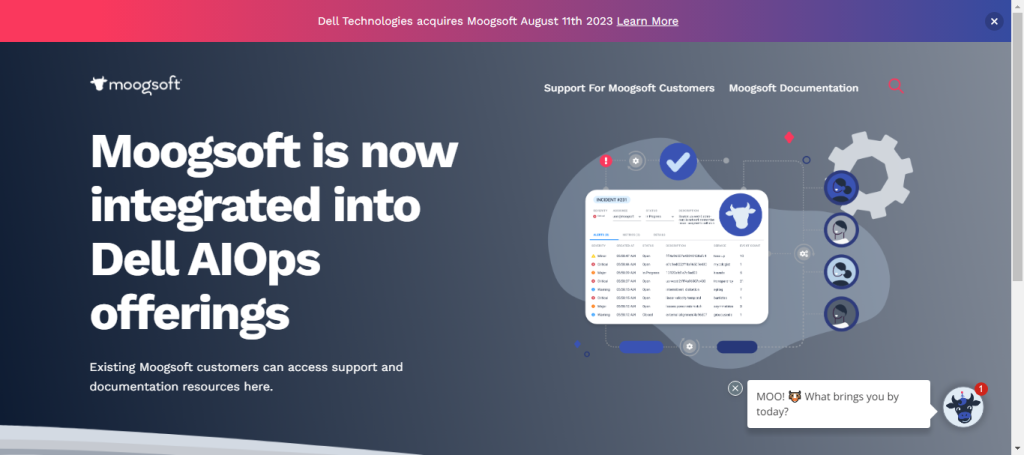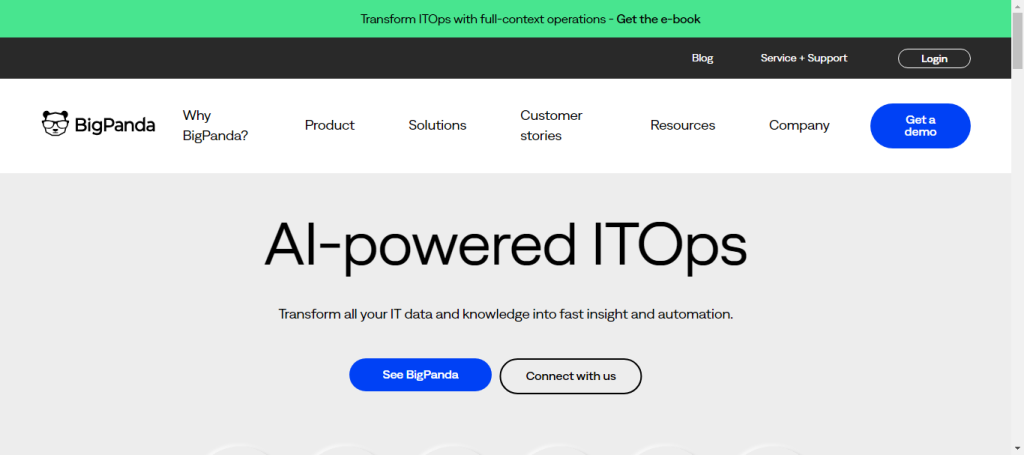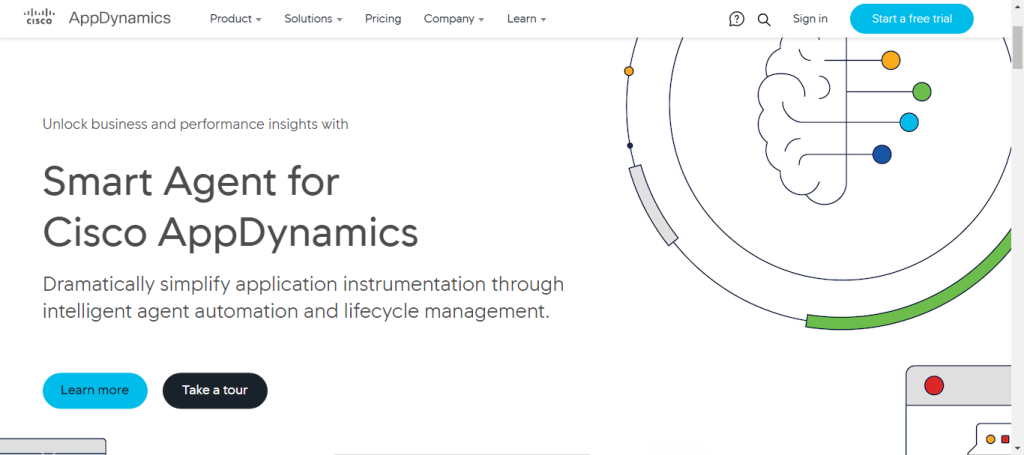Revolutionize Your IT Operations with AIOps in 2025
Feeling buried under mountains of IT data and frequent system crashes? You’re not alone. AIOps (Artificial Intelligence for IT Operations) is here to transform your IT environment by automating and enhancing operations with AI and machine learning. This article explores how AIOps works, the top tools available, and how to choose the right solution for your business needs.
Key Takeaways:
-
AIOps Explained: Understand how AIOps uses AI to automate tasks like event correlation, anomaly detection, and root cause analysis, reducing downtime and operational costs.
-
Top AIOps Tools: Discover leading AIOps software like Splunk, Dynatrace, and IBM Watson AIOps, each offering unique features and benefits for IT operations.
-
Implementation Tips: Learn practical tips for implementing AIOps tools effectively, including assessing your infrastructure, defining clear objectives, and training your IT staff.
-
Selection Criteria: Identify the critical factors to consider when choosing an AIOps tool, such as scalability, integration capabilities, real-time data processing, and cost.
-
Future Trends: Gain insights into the future of AIOps, including the adoption of advanced AI techniques, a focus on SecOps, and increased use in hybrid and multi-cloud environments.
Do you feel overwhelmed by the large volume of data and complexity in your IT environment?
Or are you frustrated with your IT systems, which are crashing frequently?
Well, You’re not alone….
Many businesses face these challenges daily, struggling to keep their systems running smoothly while trying to prevent issues before they escalate. This is where AIOps (Artificial Intelligence for IT Operations) comes into play. Several AIOps tools use artificial intelligence and machine learning to automate and enhance IT operations.
But, we know several questions arise in your mind like what exactly is AIOps?, “What is the best AIOps tool?” and so on….
AIOps combines big data and machine learning to automate IT operations processes, including event correlation, anomaly detection, and causality determination.
AIOps tools can identify patterns, predict potential issues, and automate responses, significantly reducing downtime and operational costs – All by analyzing vast amounts of data in real-time.
Did you know that 86% of IT decision-makers anticipate having a fully automated network within a year? [source]
This ultimate technology is poised to become the driving force behind network automation moving forward. Moreover, If we are talking about leading AIOps tools, they help organizations reduce downtime, improve system performance, and enhance overall user satisfaction.
However, choosing the right AIOps tool is difficult because endless options are available on the market. Here, we have compiled a list of the top 10 AIOps software that transform IT operations. We’ll also provide insights into how AIOps works and how to select the right tool for your needs. So, let’s dive in and discover how AIOps can revolutionize your IT operations.
In This Post
How Do AIOps Work?
AIOps (Artificial Intelligence for IT Operations) leverages AI, machine learning, and big data to enhance IT operations. Here’s a detailed breakdown:
-
Data Collection and Ingestion
AIOps platforms aggregate data from diverse IT environments including logs, metrics, events, and traces. This comprehensive data collection ensures real-time monitoring of IT infrastructure.
-
Data Analysis and Machine Learning
Once, data is collected, it is preprocessed and analyzed using machine learning algorithms to identify patterns, correlations, and anomalies. This analysis provides insights into normal versus abnormal behavior within the IT system.
-
Event Correlation
AIOps tools correlate events across various data sources, providing a unified view of IT operations. This correlation helps in identifying the root causes of issues by linking related events and reducing alert noise.
-
Anomaly Detection
Machine learning models detect anomalies in real-time by leveraging historical data. These anomalies can indicate potential issues such as system failures, performance bottlenecks, or security threats.
-
Automated Response and Remediation
AIOps automates responses to common IT issues. It can trigger scripts to restart services, allocate resources, or notify relevant teams. Advanced platforms may implement self-healing mechanisms to resolve issues automatically without human intervention.
-
Continuous Learning and Improvement
AIOps systems continuously learn from new data and user interactions, enhancing their accuracy and efficiency. This ongoing learning process adapts to changes in the IT environment, improving future predictions and responses.
List of The Best AIOps Software in 2025
Navigating the sea of premier AIOps tools can be overwhelming, but understanding their key features and benefits can help you make an informed choice. Here’s a closer look at the leading AIOps platforms in 2024 that are transforming IT operations:
1. Splunk

Splunk- now a Cisco company is a powerful platform known for its ability to index and correlate real-time data in a searchable repository. It provides advanced search capabilities, customizable dashboards, and alerts.
Splunk’s AIOps solution leverages machine learning to deliver predictive insights and automate incident response, making it a top choice for many enterprises.
Key Features:
- Real-time data processing and monitoring
- Machine learning-driven analytics
- Customizable dashboards and visualizations
- Integration with various IT tools and platforms
Cost:
Splunk offers different pricing models based on your business including:
- Workload Pricing
- Ingest Pricing
- Entity Pricing
- Activity-based Pricing
Check out the complete pricing details here.
Website: www.splunk.com
Founder: Michael Baum
2. Dynatrace

Dynatrace offers a comprehensive AIOps platform, which provides full-stack monitoring and automated root cause analysis. Its modules like Infrastructure and Application Observability, Digital Experience, Business Analytics, Automation, Security Protection, and Security Analytics fulfill all your needs under one roof.
Moreover, its AI engine – Davis AI, processes billions of dependencies in real-time, providing precise answers and actionable insights.
Key Features:
- Innovate and collaborate with easy-to-build apps
- Automate custom BizDevSecOps workflows
- Get instant support for your clouds and technologies
- Hypermodal AI
- Fast, indexless, schema-on-read storage
Cost:
It comes with a free trial along with the below-listed pricing details for paid users:
- Full-Stack Monitoring: $0.08 per hour for 8 GiB hosts.
- Infrastructure Monitoring: $0.04 per hour for any size host.
- Kubernetes Monitoring: $0.002 per hour for any size pod.
- Application Security: $0.018 per hour for 8 GiB hosts.
- Real User Monitoring: $0.00225 per session
- Synthetic Monitoring: $0.001 per synthetic request
- Log Management & Analytics: $0.20 per GiB (Ingest & Process)
- $0.0007 per GiB per day (Retain)
- $0.0035 per GiB (Query)
Website: www.dynatrace.com
Founder: Bernd Greifeneder
3. Moogsoft

Moogsoft, now part of Dell Technologies, is designed to reduce noise and improve incident management through its AI-driven approach.
It uses machine learning to detect anomalies, correlate events, and automate workflows, making IT operations more efficient.
Key Features:
- Noise reduction through machine learning
- Automated incident management
- Anomaly detection and event correlation
- Integration with popular ITSM tools
Cost: Pricing is not mentioned on the website.
Website: www.moogsoft.com
Founder: Phil Tee
4. IBM Cloud Pak for AIOps

IBM Cloud Pak for AIOps is an AI platform that helps organizations manage complex IT environments efficiently. It leverages machine learning and advanced analytics to provide real-time insights, detect anomalies, and predict and prevent potential issues.
The platform integrates with existing IT tools to enhance visibility, automate response actions, and ensure high availability and performance of IT systems. It is designed to improve operational efficiency, reduce downtime, and enhance the overall reliability of IT infrastructure.
Key Features:
- Cross-domain data ingestion and integration
- Topology generation
- Event correlation and compression
- AI-accelerated operations
- Augmented remediation
Cost:
Utilize IBM Cloud Pak® for AIOps to automate IT operations. With modular pricing, you only pay for what you need. Current clients can trade up, make a new investment, or use their entitlements. include free restricted Red Hat® OpenShift®.
Website: https://www.ibm.com/products/cloud-pak-for-aiops
Founder: IBM
5. BigPanda

BigPanda’s platform is designed to help IT teams manage the complexity of modern IT environments by consolidating and correlating data from various monitoring and observability tools.
By analyzing this data using AI and ML algorithms, BigPanda can identify patterns, anomalies, and potential issues across the IT infrastructure in real time.
Key Features:
- Incident management and root cause analysis
- Machine learning-driven event correlation
- Noise reduction and alert aggregation
- Integration with ITSM and monitoring tools
Cost: Pricing is unavailable on the official website.
Website: www.bigpanda.io
Founder: Assaf Resnick
6. ScienceLogic

ScienceLogic is a robust AIOps platform that offers end-to-end IT monitoring and automation. It uses artificial intelligence to analyze data from various sources, providing real-time insights and automating incident responses.
ScienceLogic helps organizations optimize IT operations by detecting and addressing issues proactively, thus reducing downtime and operational costs. The platform integrates with diverse IT environments, enabling seamless visibility and control over complex IT infrastructures.
Key Features:
- Hybrid Cloud Monitoring
- Service-Centric Operations
- Intelligent Automated Operations
- ITSM Workflow Automation
Cost: Custom pricing based on the specific needs of the organization. Click here to see the full pricing details.
Website: www.sciencelogic.com
Founder: David Link
7. AppDynamics

AppDynamics, a part of Cisco, is another AIOps tool. It provides application performance management and IT operations analytics to monitor and manage the performance of applications in real time.
By using machine learning and advanced analytics, AppDynamics detects anomalies, identifies root causes, predicts impacts, and automates responses to maintain optimal performance and user experience.
This makes it a crucial component for organizations looking to enhance their IT operations through AI-driven insights and automation.
Key Features:
- Activity Dashboard/Tracking
- Alerts/Notifications
- Anomaly Detection
- Application-Level Analysis/Management
- Asset Tracking
- Baseline Manager
- Big Data Analytics
- Bottleneck Identification
- Capacity Analytics/Management
- Container Monitoring
- Cost Management
- Customizable Reports
Cost: AppDynamics offers custom pricing based on the specific needs of the organization. Click here to see the pricing details.
Website: www.appdynamics.com
Founder: Jyoti Bansal
8. Zenoss

Zenoss is a software technology company that specializes in IT monitoring and Artificial Intelligence for IT Operations (AIOps). They offer a hybrid IT monitoring and analytics software that helps organizations ensure their IT services and applications are always functional.
Zenoss combines original programming with several open-source projects to integrate data storage and data collection processes with a web-based user interface.
Their flagship product, Zenoss Cloud, is a full-stack infrastructure, and network monitoring solution that helps IT admins optimize performance across dynamic environments, including on-premises hardware and hybrid, multi-cloud architectures.
Key Features:
- Monitoring of servers, storage, networking, virtualization, operating systems and more
- Monitoring of hyper-converged systems
- Monitoring of containers
- Monitoring of custom metrics
- Smart View
- AI-guided anomaly detection & capacity planning
- Root-cause isolation with Service Impact
- Multitenancy
- Data retention
- Integrations with ITOM solutions
Cost: Custom pricing based on the specific needs of the organization. Click here to see the details.
Website: www.zenoss.com
Founder: Greg Stock
9. PagerDuty

PagerDuty is a cloud-based incident response management platform that helps IT teams by providing immediate knowledge about incidents as soon as they occur.
It integrates data from multiple monitoring tools and systems into a single, unified view, making it easier for teams to identify and respond to issues.
Key Features:
- Offers customization options for alert notifications
- Provides a wealth of real-time dashboards and reports,
- Enabling users to identify patterns and trends in monitoring data
- Simplifies and automates the incident response process
- Helping organizations identify and resolve incidents quickly and efficiently.
Cost: Pricing starts at $699 per month.
Website: www.pagerduty.com
Founder: Alex Solomon
10. ignio

ignio -A Digtate’s AIOps platform that enables enterprises to transform their IT operations through the power of artificial intelligence and machine learning.
It provides a centralized platform that covers observability, advanced analytics, and automation, allowing organizations to detect deviations in system behavior, triage and resolve incidents, and predict future states to prevent disruptions.
With ignio, enterprises can achieve uninterrupted operations, enhance customer experiences, and drive efficient decision-making processes.
Key Features:
- Industry-leading AI/ML capabilities
- Intelligent automation
- Enterprise-wide technology coverage
- Closed-loop incident management
Cost: Pricing is unavailable on the official website.
Website: digitate.com/ignio-aiops
Founder: Venkatesh Srinivasan
Tips for Implementing AIOps Tools
Assess Current Infrastructure
Evaluate your IT infrastructure to identify data sources, integration points, and existing monitoring tools. Ensure your environment can support AIOps by examining network topology, application logs, performance metrics, event logs, and data lakes.
Define Clear Objectives
Set specific goals for AIOps implementation, such as reducing downtime, improving performance, and automating responses. Establish operational goals, performance benchmarks, and incident reduction targets.
Choose the Right AIOps Tools
After defining your objectives, it’s time to select tools that fit your requirements by researching and comparing features, scalability, and integration capabilities.
Implement in Phases
Roll out AIOps tools gradually, starting with a pilot project, evaluating results, and expanding implementation in stages. Use a phased approach, pilot testing, incremental rollout, step-by-step implementation, and result evaluation.
Ensure Data Quality
Maintain high data quality by cleaning and normalizing data to ensure accurate and reliable inputs. Focus on data preprocessing, data validation, data integrity, data normalization, and reliable data sources.
Train IT Staff
Educate your team on AIOps tools, methodologies, and best practices to ensure effective use and management. Provide skill development, training programs, AIOps methodologies, team education, and best practice guidelines.
Monitor and Optimize
Continuously track performance, gather feedback, and make necessary adjustments to optimize AIOps tools and processes. Use performance metrics, continuous improvement, system optimization, feedback loops, and AIOps adjustments.
Criteria for Selecting the Best AIOps Tool
To help you make an informed decision, we have outlined the top factors to consider when selecting an AIOps tool:
- Scalability
As your business grows, so does the complexity and volume of data. The AIOps tool you select should be able to scale with your operations. It should handle increasing data loads without compromising performance.
- Integration Capabilities
An effective AIOps tool must integrate seamlessly with your existing infrastructure, including various monitoring and management systems. Check if the tool supports APIs and pre-built integrations with your current software stack.
- Real-Time Data Processing
The ability to process data in real-time is essential for proactive IT operations. Ensure the AIOps tool can analyze data on the fly to detect and address issues promptly, preventing potential downtime and improving system reliability.
- Advanced Analytics and Machine Learning
Look for tools that offer robust analytics and machine learning capabilities. These features enable the tool to learn from historical data, identify patterns, predict potential issues, and provide actionable insights.
- Ease of Use
The tool should have an intuitive user interface that allows IT staff to quickly adopt and utilize its features. However, a steep learning curve can hinder the tool’s effectiveness, and delay in adapting its benefits.
- Automation Capabilities
A key benefit of AIOps is its ability to automate routine tasks and incident responses. Evaluate the tool’s automation features, such as automated root cause analysis, incident response, and remediation processes.
- Cost
Consider the total cost of ownership, including initial setup, licensing fees, and ongoing maintenance. Ensure the tool provides a good return on investment by reducing operational costs and improving efficiency.
- Security and Compliance
Ensure the AIOps tool adheres to the organization’s security policies and compliance requirements. It should offer robust security features to protect sensitive data and support compliance with relevant regulations.
- Vendor Support and Community
Evaluate the vendor’s reputation for customer support and the availability of a strong user community. Reliable support can be vital for troubleshooting issues and ensuring smooth operation.
- Customization
Every organization has unique requirements. The AIOps tool should offer customization options to tailor functionalities to your needs and workflows.
You can narrow your options by considering these criteria and select an AIOps tool that best fits your organization’s requirements. The right tool will help you enhance IT operations, improve system reliability, and drive business success.
Over to You!
With the increasing complexity of IT environments, AIOps (Artificial Intelligence for IT Operations) has become essential for businesses to manage their systems effectively.
AIOps tools leverage AI and machine learning to automate IT operations, improve system reliability, and enhance user satisfaction.
However, if you also want to create your own AIOPS tool without investing much time, CodeConductor is the right AI software development platform.
CodeConductor is the world’s first AI software development platform specifically designed for IT operations, and it can revolutionize the way you manage your IT environment. Describe your needs, and get a production-ready code within minutes with full access to the git repository. Develop apps, websites, dashboards, and custom software to streamline your IT operations and unlock endless innovation.
Book your free demo today and see how CodeConductor can transform your IT operations, enhance customer satisfaction, and drive business success. It’s time to elevate your IT environment with the power of AI!
Focus on innovation, not infrastructure. Start building, not coding!
FAQs
1. What is the difference between AIOps and traditional IT operations management?
AIOps uses artificial intelligence and machine learning to automate and enhance IT operations, offering real-time insights and predictive analytics, whereas traditional IT operations rely heavily on manual processes and reactive approaches.
2. How does AIOps improve incident management?
AIOps improves incident management by automating event correlation, detecting anomalies early, providing root cause analysis, and offering automated remediation, thereby reducing mean time to resolution (MTTR).
3. Can AIOps be integrated with existing ITSM tools?
Yes, AIOps can be seamlessly integrated with existing IT Service Management (ITSM) tools, enhancing their capabilities by providing real-time data analysis, automated incident response, and predictive maintenance.
4. What are the key challenges in implementing AIOps?
Key challenges in implementing AIOps include data privacy concerns, integration complexity with legacy systems, and the need for skilled personnel to manage and interpret the AI-generated insights.
5. What future trends are expected in the AIOps market?
Future trends in the AIOps market include the adoption of advanced AI techniques like deep learning, a focus on security operations (SecOps), increased use in hybrid and multi-cloud environments, and greater emphasis on predictive analytics and automated operations.

Founder CodeConductor







